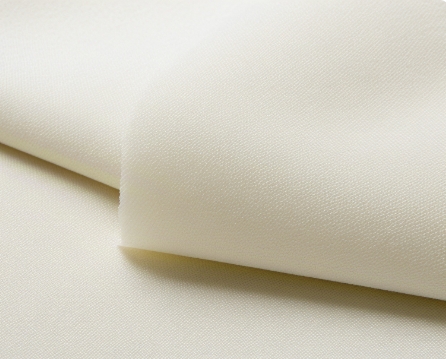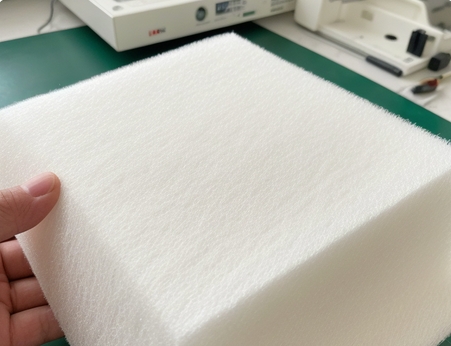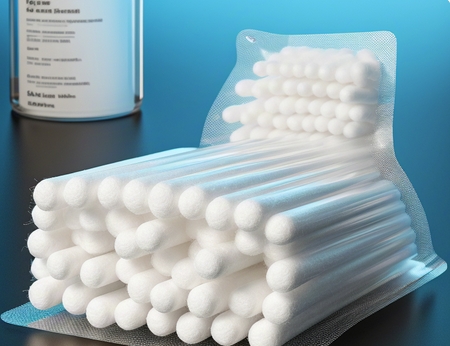Language

The industrial dust-free cloth grade classification system is an important technical specification for clean environment management. Its core indicators are based on the particle release amount and microbial control level of the material during dynamic use. According to the equivalent grading principle of ISO 14644-1 in the international clean room standard, dust-free cloth of different levels corresponds to the air cleanliness requirements of specific application scenarios. The following is a detailed explanation of the five-level classification system widely used in professional fields:
Class 10 is the top product for industrial dust-free cloth grade classification. This type of material needs to maintain stable performance in an extreme environment where 10 particles more than 0.5 microns per cubic foot of air are contained in air. The manufacturing process must strictly follow the ten-level workshop standards, and everything from raw material slitting to final packaging must be completed in a positive laminar environment. Taking semiconductor wafer cleaning as an example, the fiber structure of the ten-stage dust-free cloth has been laser edge-sealed to prevent microfibers from falling off when wiping 300mm silicon wafers. This precision characteristic makes it a necessary consumable for manufacturing process chips below 7nm.
Class 100 dust-free cloth (Class 100) This level of product corresponds to the control standard for the concentration of 100 particles per cubic foot, and the precision of its air filtration system is equivalent to the operating room-level environmental control. In the field of biopharmaceuticals, a grade 100-level dust-free cloth is used for cleaning the cavity of the lyophilize, and its unique antistatic treatment can effectively prevent charge accumulation on the surface of the glass vial. It is worth noting that the 0.03μm-level particle retention capability of this type of material in the OLED screen bonding process ensures the dust-free assembly of the display module.
Class 1000 is suitable for intermediate grade products with precision optical component cleaning, and its double-layer knitted structure can meet the dual needs of liquid absorption and low dust generation. In the manufacturing of inertial navigation system, a thousand-level dust-free cloth is used to wipe the ring laser gyroscope group, and its residue index is strictly controlled within 5μg/cm². The performance of this grade of materials in the cleaning process of automotive ECU modules proves that its comprehensive cost-effectiveness has significant advantages in the field of consumer electronic manufacturing.
Class 10,000 is the basic protection level in the classification of industrial dust-free cloth, and the standard products of 10,000 are mainly used to serve the environmental maintenance of conventional clean workshops. On the lithium battery diaphragm production line, the organic solvent resistance of this type of material makes it the first choice for daily maintenance of the electrode roller press. It should be noted that the core difference between ten thousand and ten thousand grade products is reflected in the edge processing process - the former uses ultrasonic cutting technology, while the latter is mostly ordinary mechanical cutting.
In the industrial dust-free cloth grade classification system, this level of products mainly undertake auxiliary functions of environmental maintenance. Taking food-grade clean packaging lines as an example, a 100,000-level dust-free cloth can effectively control the proliferation of microorganisms in the workshop environment, and its antibacterial treatment process complies with the FDA 21CFR standard. A noteworthy technical detail is that this grade of materials usually uses a polyester/cellulose blend structure, which achieves cost optimization while ensuring basic cleaning performance. The core differences between products of each grade are not only reflected in the air cleanliness of the production workshop, but more importantly, the fiber density, edge sealing process and cleaning procedures of the material itself.
Guide to selecting dust-free cloth in clean industrial environments
In clean room environmental management, the classification of industrial dust-free cloth grades is mainly based on the cleanliness requirements of its applicable scenarios. According to the international standard of ISO 14644-1, clean environments are usually divided into nine levels (Class 1 to Class 9). In the Class 3 environment commonly used in semiconductor manufacturing, it is required that the number of particles ≥0.1 microns in each cubic meter of air should not exceed 1,000. This strict standard determines the principle of choosing dust-free cloth: it is not that the product itself has a clean grade, but that its physical characteristics need to match a specific clean environment.
Professional inspection data shows that the fiber shedding of high-quality dust-free cloth should be controlled below 0.1mg/㎡. To achieve this indicator, the choice of edge sealing process is crucial. Although common laser edge sealing technology can effectively control burrs, micron-scale particles may still be produced in ultra-clean environments. In contrast, ultrasonic edge sealing achieves fiber fusion through high-frequency vibration, just like "welding" the edges with intermolecular bonding forces, which can reduce the fiber shedding rate to less than 30% of the traditional process.
Tags:
RELATED RESOURCES

How to choose ultra-fine dust-free cloth? Full analysis of 4009 and 4008 models
Analysis of the technology of ultra-fine and ultra-fine dust-free cloth: core differences between 4008 and 400......
More

Analysis of multi-functional wipe cloth technology: 5 major advantages to improve industrial cleanin
Revolutionary materials in the field of industrial cleaning: Analysis of multifunctional wipe cloth technology......
More

Microfiber Clean room Wipes Application Guide: Biopharmaceutical/Fab Cleaning Solutions.
As the core consumable in the field of precision cleaning, the microfiber dust-free cloth is precisely woven b......
More

Should I choose 70% or 99% cleanroom cotton swabs?
Professional grade isopropyl alcohol cleaning tool operation guideIn the field of precision instrument mainten......
More
Related Products
Room 101, Building 1, Angeer Factory, No.4, Hetian Road, Shatian Community, Kengzi street, Pingshan District, Shenzhen, Guangdong, P.R. China 518122
info@wipestar.com
+86-755-89616775
+86-755-89616773
Related Products
RELATED RESOURCES

How to choose ultra-fine dust-free cloth? Full analysis of 4009 and 4008 models
Analysis of the technology of ultra-fine and ultra-fine dust-free cloth: core differences between 4008 and 400.........
More

Analysis of multi-functional wipe cloth technology: 5 major advantages to improve industrial cleanin
Revolutionary materials in the field of industrial cleaning: Analysis of multifunctional wipe cloth technology.........
More
WIPESTAR
微信官方公众号